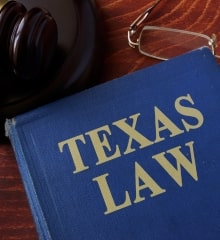Student Loans are now Dischargeable!
New Process Announced to Discharge Student Loan Debt
On Thursday, November 17, 2022, the Department of Justice, in cooperation with the Department of Education, announced new guidelines to make it easier and to discharge student loans. In my opinion, this is the most sweeping change to benefit borrowers in over 30 years.
According to the Federal Reserve, student loan debt in the United States has reached an all-time high of $1.5 trillion. This figure represents a burden for both individuals and the economy as a whole. Student loan debt can make it difficult for former students to start businesses, buy homes, and save for retirement. In addition, student loan debt is one of the leading causes of financial stress
The Attorney General’s office sent out guidance explaining the new process to all U.S. Attorneys.
The basic criteria to apply is:
-
The Borrower cannot afford to pay their student loans.
-
The Borrower’s inability is likely to continue in the future.
-
This is presumed if one the following
Debtor is over 65; or
-
Debtor has a disability or medical condition impacting their potential income; or
-
Debtor was unemployed for 5 of the last 10 years; or
-
Debtor did not get the degree for which they incurred the debt; or
-
The student has been out of school for 10 years.
-
The Borrower has acted in good faith in trying to repay.
-
This is presumed if one of the following:
-
Debtor made a payment; or
-
Debtor applied for forbearance; or
-
Debtor applied for IDRP (income driven repayment plan); or
-
Debtor applied for federal consolidation; or
-
Debtor responded to a collector; or
-
Debtor engaged with Dept of Ed or collector; or
-
Debtor engaged with a 3rd party to help with managing the debt.
Prior to this guidance, it was nearly impossible for most people to get rid of their student loan debt through bankruptcy. The standard was much harder than getting rid of other types of debt. Even though the final decision about whether to discharge the debt is up to a judge, the government’s recent announcement of a new standard will make it much easier to predict who will be able to discharge their student loan debt.
The guidance applies to future and pending cases.
People who want to get rid of their student loan debt through bankruptcy must show that they will have a hard time without getting the debt discharged. This is harder than getting rid of other types of debt. Even though the final decision about whether to discharge the debt is up to a judge, today the government announced a new process that will make it easier for people to know if they meet the standards to get their debt discharged. This new process will also help people who didn't think they could get relief through bankruptcy more easily identify if they are eligible for a discharge.
The Department of Education will now look at a person's past, present, and future financial situation when deciding if they should be able to stop paying for their student loans. The government will use data from the Department of Education as well as a form filled out by the borrower to make this decision. The Justice Department will look at all of this information and decide whether or not the person should have their student loan debt forgiven.
The Department of Justice and Department of Education are working together to make the student loan forgiveness process easier for borrowers. They will continue to watch how the process works in practice and assess how well it is working after the first year. They may also decide to continue to assess it after that depending on how it goes.
The goal of this change is to reduce the burden on borrowers and government attorneys, make it easier for borrowers to get discharges, and create more consistency and predictability.
SUMMARY:
-
According to the Federal Reserve, student loan debt in the United States has reached an all-time high of $1.5 trillion. This figure represents a burden for both individuals and the economy as a whole. Student loan debt can make it difficult for graduates to start businesses, buy homes, and save for retirement. In addition, student loan debt is one of the leading causes of financial stress.
-
The good news is that there are programs in place to help ease the burden of student loan debt. The federal government offers student loan forgiveness programs for those who really need it with guidance from U.S Attorneys if cases arise where discharge is appropriate such as:
-
Debtor lacks present ability to pay; this is presumed if IRS standard expenses surpass debtor’s income
-
Debtor’s inability likely continue in future which presumption applies if debtor meets any one criteria: over 65 years old; has disability or medical condition impacting potential income; unemployed 5/10 years; did not get degree associated with incurred debt; or repayment status 10 years
-
Good faith efforts have been made by debtor which include making payments, applying forbearance or IDRP (income driven repayment plan), responding collectors,


